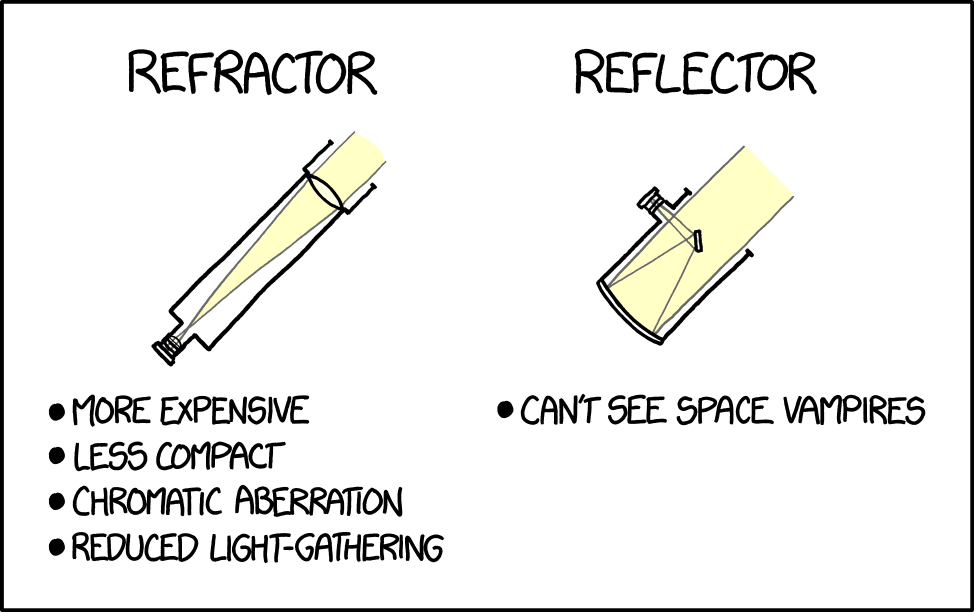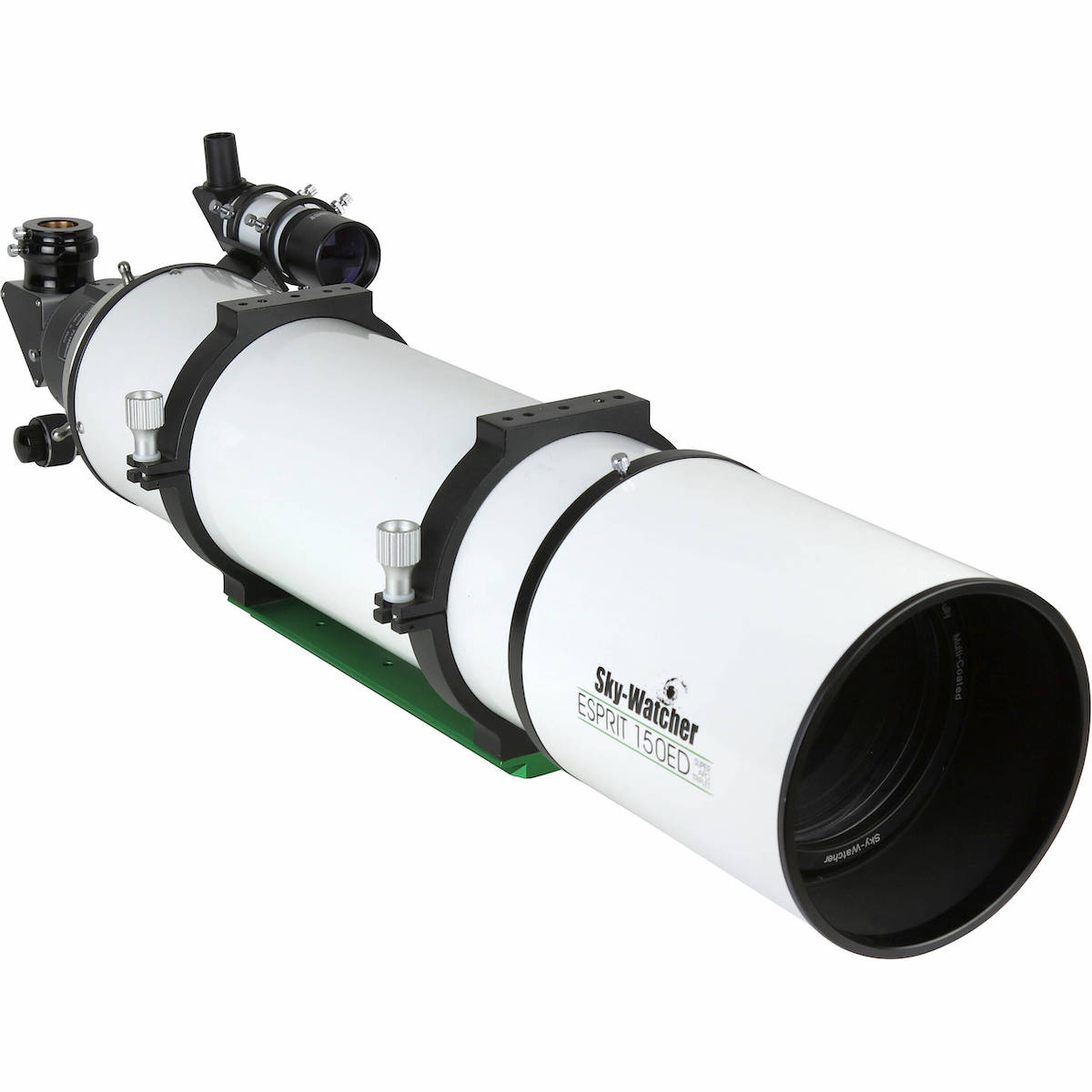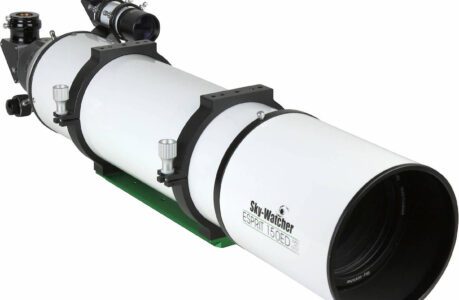Unlocking the Mysteries of Refractor Telescopes – Your Ultimate Guide to the Cosmos!
Have you ever gazed at the night sky, captivated by the dazzling stars and celestial wonders above? If so, you’re not alone. The cosmos has always fascinated humanity, inspiring us to explore the heavens. To do this, we’ve developed remarkable tools, one of which is the refractor telescope. In this comprehensive guide, we’ll delve into the inner workings of refractor telescopes, uncover their key features, and weigh their pros and cons. By the end, you’ll have a deep understanding of these optical marvels and be ready to embark on your own cosmic adventures.
The Basics of Refractor Telescopes
What is a Refractor Telescope?
A refractor telescope, often referred to simply as a refractor, is a type of optical telescope that employs lenses to bend and focus light. It’s one of the earliest designs in the history of telescopes and remains popular among astronomers and amateur stargazers alike. The fundamental principle behind a refractor telescope is the refraction of light.
How Does a Refractor Telescope Work?
The primary components of a refractor telescope are the objective lens and the eyepiece. Let’s break down how these components work together to bring distant celestial objects into focus.
1. Objective Lens
The objective lens is the larger of the two lenses in a refractor telescope, situated at the front end. Its primary function is to collect and bend incoming light rays. As light from a distant celestial object enters the telescope, it passes through the objective lens. The lens refracts or bends the light, converging it to a point called the focal point. The size and quality of the objective lens greatly influence the telescope’s performance.
2. Focal Point
At the focal point, the converging light rays come together, forming an image of the observed celestial object. The position of the focal point is crucial, as it determines where you need to place the eyepiece to view the image. The distance from the objective lens to the focal point is known as the focal length, a critical parameter that affects magnification and field of view.
3. Eyepiece
The eyepiece is the smaller lens at the rear end of the refractor telescope. Its primary role is to magnify the image created by the objective lens. By adjusting the eyepiece’s distance from the focal point, you can control the level of magnification. This adjustability allows you to zoom in on specific features of celestial objects.
Key Features of Refractor Telescopes

Refractor telescopes are built to withstand the test of time. The sealed tube not only protects the optics but also shields them from moisture and environmental factors that can degrade performance. As a result, a well-maintained refractor can last for decades, providing consistent and reliable performance year after year.
Now that we’ve explored the basic workings of a refractor telescope, let’s delve into some key features that set them apart from other telescope designs.
1. Excellent Image Quality
One of the standout advantages of refractor telescopes is their ability to provide exceptionally sharp and clear images. Since refractors use lenses instead of mirrors, they don’t suffer from issues like spherical aberration or coma, which can affect the image quality in other telescope types. This makes refractors ideal for observing lunar craters, planetary details, and double stars with high precision.
2. Low Maintenance
Refractor telescopes are renowned for their low maintenance requirements. Unlike reflector telescopes that use mirrors, refractors have sealed optical tubes, protecting their lenses from dust and debris. This means you won’t need to clean or collimate the optics as frequently, simplifying the overall upkeep.
3. Compact and Portable
Refractor telescopes are known for their compact and lightweight designs. This portability makes them a favorite among amateur astronomers and those who wish to observe the night sky from various locations. You can easily transport a refractor telescope to a dark-sky site for optimal viewing conditions.
4. Versatility
Refractor telescopes are versatile instruments suitable for a wide range of celestial observations. Whether you’re interested in lunar and planetary viewing, deep-sky exploration, or astrophotography, a refractor telescope can adapt to your needs with the right accessories and eyepieces.
5. Minimal Maintenance
Unlike reflector telescopes that use mirrors, refractor telescopes have sealed optical tubes, protecting their lenses from dust and debris. This means you won’t need to clean or collimate the optics as frequently, simplifying the overall upkeep.
Pros and Cons of Refractor Telescopes
Pros of Refractor Telescopes
1. Superb Image Quality
One of the most compelling advantages of refractor telescopes is their ability to deliver stunning image quality. The use of lenses rather than mirrors minimizes optical aberrations, resulting in sharp and clear views of celestial objects. This high image fidelity makes refractors particularly well-suited for observing the moon, planets, and double stars.
2. Low Maintenance
Refractor telescopes are renowned for their low-maintenance nature. The sealed optical tube protects the lenses from dust and other contaminants, reducing the need for frequent cleaning and collimation. This ease of maintenance can be especially appealing to beginners who are just starting their astronomical journey.
3. Portability
The compact and lightweight design of refractor telescopes makes them incredibly portable. Whether you’re traveling to a dark-sky location or simply moving your telescope around your backyard, the convenience of a refractor cannot be overstated. This portability encourages more frequent use and exploration of the night sky.
4. Versatility
Refractor telescopes are versatile instruments that cater to a wide range of astronomical interests. With the appropriate eyepieces and accessories, you can adapt your refractor for various types of observations, from lunar and planetary studies to deep-sky exploration and even astrophotography. This adaptability makes refractors an excellent choice for astronomers with diverse interests.
5. Durability
Cons of Refractor Telescopes
While refractor telescopes offer numerous advantages, they are not without their limitations. Here are some of the downsides to consider:
1. Cost
High-quality refractor telescopes can be expensive, especially when compared to some reflector telescope models. The precision engineering required for the lenses and optical components contributes to the higher cost. However, it’s essential to view this as an investment in exceptional image quality and durability.
2. Chromatic Aberration
One common optical issue with refractor telescopes is chromatic aberration, often referred to as “color fringing.” This phenomenon occurs because different colors of light are refracted by lenses to varying degrees. As a result, you may notice colored halos around bright objects, particularly at higher magnifications. Some refractors use special lens elements or coatings to mitigate chromatic aberration, but these solutions can add to the cost.
3. Limited Aperture Size
The size of the objective lens in a refractor telescope can limit its light-gathering capability compared to larger reflector telescopes. While refractors can still provide excellent views of many celestial objects, they may not excel in capturing faint deep-sky targets like galaxies and nebulae. Astrophotographers may face challenges in capturing detailed images of these dim objects with smaller refractors.
4. Collimation
Though refractors require less frequent collimation compared to reflector telescopes, they are not entirely free from this maintenance task. Over time, the optical elements can shift slightly, affecting alignment. While collimating a refractor is relatively straightforward, it’s still an extra step that needs occasional attention.
The Evolution of Refractor Telescopes
Historical Significance
The history of refractor telescopes is a captivating journey that spans centuries and involves some of the most renowned astronomers and scientists in human history. The invention of the refracting telescope is often attributed to Dutch mathematician and astronomer Hans Lippershey in the early 17th century. However, it was Galileo Galilei who popularized and refined the design, using a refractor telescope to make groundbreaking astronomical observations, including the discovery of Jupiter’s four largest moons.
Modern Advancements
Since Galileo’s time, refractor telescopes have undergone significant advancements in both design and technology. Modern refractors benefit from improved lens coatings, apochromatic (APO) designs that minimize chromatic aberration, and computerized mount systems that enhance tracking and ease of use.
Choosing the Right Refractor Telescope
Factors to Consider
Selecting the perfect refractor telescope for your astronomical pursuits requires careful consideration of various factors. Here are some key aspects to ponder before making your choice:
1. Aperture Size
The aperture size, which corresponds to the diameter of the objective lens, plays a critical role in a refractor telescope’s light-gathering ability. Larger apertures can collect more light and reveal finer details on celestial objects. However, keep in mind that larger apertures often result in larger and heavier telescopes, reducing portability.
2. Focal Length
The focal length determines the magnification and field of view of your refractor telescope. Telescopes with longer focal lengths offer higher magnification but narrower fields of view, making them ideal for planetary and lunar observations. Shorter focal lengths provide wider fields of view, making them better suited for deep-sky exploration.
3. Type of Refractor
There are different types of refractor telescopes, including achromatic, apochromatic, and semi-apochromatic designs. Achromatic refractors are more budget-friendly but may exhibit some chromatic aberration. Apochromatic refractors use specialized lens elements to minimize chromatic aberration, delivering superior image quality. Consider your budget and desired image quality when choosing a type of refractor.
4. Mount Type
The mount is crucial for stability and ease of tracking celestial objects. Refractor telescopes are often paired with equatorial mounts that can be motorized for automated tracking. Altazimuth mounts are simpler but may require manual adjustments to follow celestial targets. Choose a mount that suits your observing style and skill level.
5. Accessories
Consider the accessories that come with the telescope, such as eyepieces, finderscopes, and star diagonals. Quality accessories can enhance your viewing experience. Additionally, think about your long-term goals, such as astrophotography, and whether the telescope can accommodate the necessary accessories and equipment.
Maintenance Tips for Refractor Telescopes
To ensure your refractor telescope provides years of celestial enjoyment, it’s essential to follow proper maintenance practices. Here are some tips to keep your telescope in pristine condition:
1. Keep it Clean
While refractor telescopes require less frequent cleaning than other telescope types, it’s still important to keep the optics free from dust and dirt. Use a soft brush or compressed air to remove loose particles before gently wiping the lenses with an optical cleaning solution and a lint-free cloth.
2. Store Properly
When not in use, store your refractor telescope in a dry and dust-free environment. Use protective caps for both the objective lens and eyepiece to prevent dust and debris from settling on the optics. Proper storage helps prolong the life of your telescope.
3. Collimate as Needed
Periodically check the collimation of your refractor telescope, especially if you transport it frequently. Collimation ensures that all optical elements are properly aligned, providing the best image quality. Follow the manufacturer’s instructions for collimation or seek assistance from an experienced astronomer if you’re unsure.
4. Avoid Direct Sunlight
Never point your refractor telescope at the sun without a solar filter specifically designed for telescopes. Direct sunlight can damage the optics and pose a severe safety risk. Exercise caution when observing near sunrise or sunset to avoid accidentally aligning with the sun.
Popular Refractor telescopes
When it comes to refractor telescopes, there are several popular and highly regarded models available on the market. These telescopes are often favored by both amateur astronomers and experienced stargazers for their exceptional image quality and versatility. Let’s take a look at some of the popular refractor telescopes that have gained recognition within the astronomy community:
1. Celestron AstroMaster 102AZ
The Celestron AstroMaster 102AZ is a well-rounded refractor telescope designed for beginners and intermediate astronomers. It features a 102mm aperture and a focal length of 660mm, providing clear and detailed views of the moon, planets, and deep-sky objects. Equipped with a sturdy altazimuth mount, this telescope is easy to set up and use, making it an excellent choice for newcomers to astronomy.
2. Orion SkyQuest XT8i IntelliScope Dobsonian Telescope
While the Orion SkyQuest XT8i is primarily known for its Dobsonian design, Orion offers an optional refractor-style extension called the “IntelliScope” that transforms it into a hybrid telescope. With an 8-inch aperture and a convenient push-to system, it’s a fantastic choice for those looking to explore both the simplicity of a Dobsonian and the versatility of a refractor.
3. Explore Scientific ED127 Essential Series Air-Spaced Triplet
The Explore Scientific ED127 is a premium refractor telescope known for its apochromatic triplet lens design, which minimizes chromatic aberration and provides high-contrast, color-accurate views. With a 127mm aperture and a focal length of 952mm, it’s suitable for both visual observations and astrophotography. This telescope is often lauded for its exceptional optics and build quality.
4. Sky-Watcher ProED 80mm Doublet APO Refractor
The Sky-Watcher ProED 80mm is a compact and portable refractor telescope that’s highly regarded for its affordability and performance. It features an 80mm doublet apochromatic lens with FPL-53 glass, ensuring minimal chromatic aberration. This makes it an excellent choice for astrophotographers and observers who prioritize color accuracy and sharpness.
5. Meade Instruments Infinity 102mm AZ Refractor Telescope
The Meade Instruments Infinity 102mm AZ is a beginner-friendly refractor telescope that offers a 102mm aperture and a focal length of 600mm. It comes with a simple altazimuth mount and a red dot finder, making it easy for newcomers to navigate the night sky. This telescope is ideal for observing the moon, planets, and bright deep-sky objects.
6. Takahashi FSQ-106EDX4 Quadruplet Astrograph
For serious astrophotographers and advanced astronomers, the Takahashi FSQ-106EDX4 is a top-of-the-line refractor telescope. It features a 106mm aperture and a quadruplet lens design, delivering exceptional image quality and pinpoint stars across the field of view. While it comes with a higher price tag, it’s considered a premium choice for those seeking unparalleled optics.
These are just a few examples of popular refractor telescopes available in the market. When choosing a refractor telescope, it’s essential to consider your specific observing goals, budget, and preferences. Whether you’re a beginner or an experienced astronomer, there’s likely a refractor telescope that suits your needs and helps you explore the wonders of the night sky with clarity and precision.
Refractors
In your quest to explore the cosmos, a refractor telescope can be your trusted companion. With its ability to deliver superb image quality, low maintenance requirements, and versatility, it’s no wonder that refractors have stood the test of time in the world of astronomy.
As you embark on your astronomical journey, consider the pros and cons of refractor telescopes, choose the right one for your needs, and remember to maintain it with care. With a well-maintained refractor telescope by your side, you’ll be ready to unlock the mysteries of the universe, one star at a time. Happy stargazing!
In this comprehensive guide, we’ve delved into the inner workings of refractor telescopes, explored their key features, and weighed their pros and cons. By the end, you should have a deep understanding of these optical marvels and be ready to embark on your own cosmic adventures.

